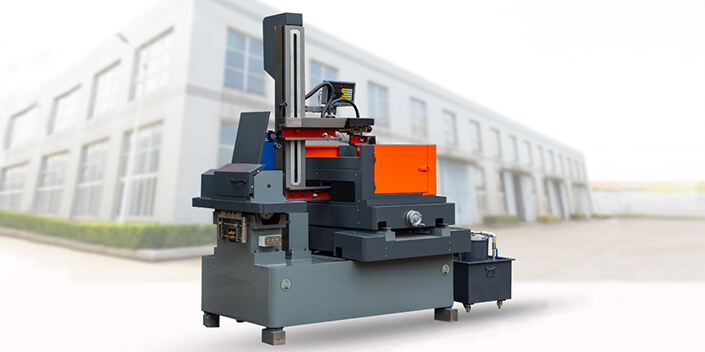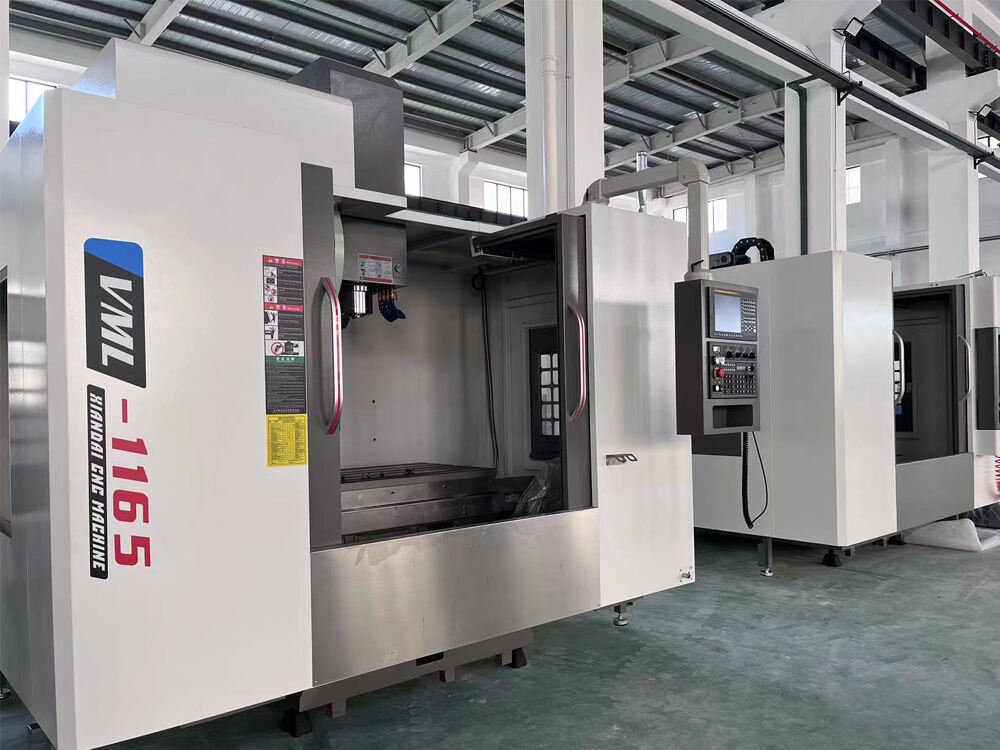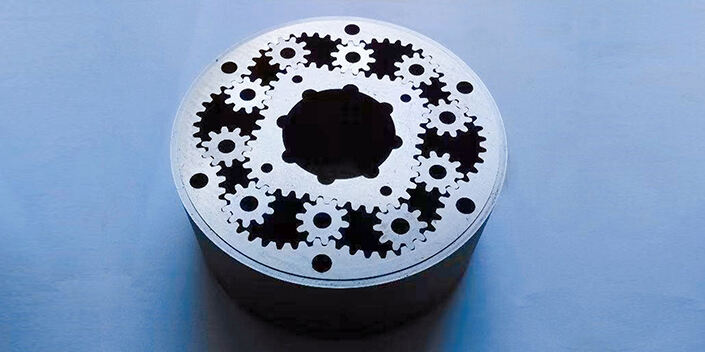Understanding the Function of Dielectric Fluid in EDM Wire Cutting Machine
The dielectric fluid used in EDM wire cutting machines does two main things at once: acts as an electrical insulator and keeps things cool during operation. Without this fluid, there would be premature sparking because the machine can't maintain that important discharge gap between the wire and workpiece. Plus, the fluid washes away all those tiny bits of metal that get cut off during the process, which helps prevent tools from getting dirty or damaged. According to research published last year in Manufacturing Technology Journal, machines where operators take good care of their dielectric systems see around 18 percent better cutting performance overall. On the flip side, when the fluid gets contaminated, electrodes tend to wear out faster. We've seen cases where surface finish quality drops by nearly 30% on hardened steel parts alone when using old or dirty dielectric fluid instead of fresh stuff.
Inspecting and Preventing Contamination in Dielectric Fluid
When doing weekly checks on fluids, look out for signs of oil turning milky (emulsification), buildup of metal sludge, or when the pH drops below 6.5 or goes over 8.5. These issues matter because stuff like aluminum oxides and carbonized bits floating around actually mess with spark stability. According to the Industrial Maintenance Report from 2022, these kinds of contaminants are responsible for nearly half (47%) of all unexpected EDM machine downtime. For better monitoring, get an inline particle counter running to spot anything bigger than 15 microns in size. And don't forget magnetic separators either they work great at grabbing those iron particles that tend to accumulate during wire cutting operations.
Monitoring Water Quality and Filtration System Efficiency
| Parameter | Ideal Range | Testing Frequency |
|---|---|---|
| Water resistivity | 10–50 kΩ/cm | Daily |
| Filtration pressure | 0.8–1.2 bar | Hourly |
| Fluid temperature | 20–25°C (68–77°F) | Continuous |
Flush 5% of the dielectric tank weekly to remove dissolved impurities. Replace filter cartridges when pressure differentials exceed 1.5 bar or every 600 operating hours.
Replacing Dielectric Fluid According to Usage and Manufacturer Guidelines
Most EDM manufacturers recommend full dielectric fluid replacement after 1,200–1,500 machine hours or when conductivity surpasses 30 μS/cm. Sudden increases in wire rupture rates (above 3 breaks/hour) often signal degraded fluid performance. Always dispose of spent dielectric through certified recycling partners to meet EPA and ISO 14001 standards.
Proper EDM Wire Selection, Handling, and Replacement
Using High-Quality EDM Wire for Improved Cutting Precision
The choice of high quality EDM wire makes all the difference when it comes to achieving accurate cuts and keeping expenses under control. Most shops still rely on brass wire for around 8 out of 10 wire erosion jobs because it conducts electricity well and doesn't break the bank. Some manufacturers have started switching to zinc coated options though, since these tend to cut faster by about 15 to maybe even 20 percent during detailed work. Cheap wires are definitely something to watch out for. When they snap mid-job, the consequences pile up fast. Not only does the machine sit idle waiting for replacement, but damaged materials often need to be scrapped too. Industry insiders estimate each broken wire incident typically costs anywhere from two hundred to five hundred dollars depending on what gets ruined.
Best Practices for Wire Handling and Contamination Prevention
- Store wire spools in climate-controlled environments (40–60% humidity, <25°C) to prevent oxidation
- Use lint-free gloves during handling to block oil or debris transfer
- Inspect wire for kinks or corrosion before threading—minor surface flaws reduce spark control
Matching Wire Type and Diameter to Machine Specifications
Thinner wires (0.0008–0.004") enable intricate cuts but require adjusted power settings to avoid breakage. Always cross-reference your machine’s manual—using 0.010" wire on systems calibrated for 0.008" diameters increases energy consumption by 12% and degrades corner accuracy.
Routine Machine Calibration and Operational Checks
Inspecting Alignment and Calibration for Consistent Accuracy
Getting the alignment right on EDM wire cutting machines makes all the difference when it comes to dimensional accuracy. A recent study from 2024 found that around six out of ten geometric errors actually come down to bad calibration issues. Most shops keep their positioning tight at plus or minus 2 microns through regular checks with either laser interferometry or those handy ballbar tests. And let's not forget about thermal compensation adjustments which help fight off those pesky temperature related distortions that creep in during long runs. The industry standards suggest checking how parallel the wire guide is to the worktable every month or so. This simple step keeps things accurate over time, especially important for those precision parts where even tiny drift matters a lot.
Monitoring Wire Tension, Feed Rate, and Power Settings
Keeping wire tension steady around 8 to 12 Newtons makes all the difference when it comes to getting clean cuts without wires snapping. If feed rates go over 10 millimeters per minute though, things start going wrong with the spark gap stability. When working with different materials, operators need to check how conductive they are before setting power levels. For those tough hardened steels, dropping pulse duration under 50 microseconds actually boosts surface quality by roughly 30 percent according to what we've seen in practice. And don't forget about those real time monitoring systems either. They watch for voltage changes that creep above 5 percent, which lets technicians catch problems before wild discharge patterns develop and ruin the whole operation.
Ensuring Electrical Stability and Component Integrity
Weekly resistance checks on power cables and grounding systems prevent arcing failures. Replace carbonized brass guides showing wear exceeding 0.1 mm, as uneven current distribution from degraded components increases energy consumption by 18%. Dielectric fluid conductivity should remain below 20 µS/cm to avoid stray current paths compromising machining precision.
Lubrication and Mechanical Component Maintenance
Lubricating moving parts to reduce wear in EDM wire cutting machine
Proper lubrication reduces friction by up to 40% in high-precision components like guide rails and ball screws (Industrial Maintenance Journal 2023). A case study from industrial engineers found that 68% of unplanned EDM downtime stems from improper greasing intervals. Follow this maintenance framework:
| Component | Lubrication Frequency | Key Benefit |
|---|---|---|
| Linear guides | Every 120 operating hours | Prevents uneven wire feed |
| Drive gears | Weekly | Reduces backlash errors |
| Wire tensioners | After each job | Maintains ±2¼m precision |
Use only manufacturer-approved lubricants—compatible oils can degrade seals and increase wear rates by 22% (Tribology Today 2024).
Cleaning and servicing filters for uninterrupted operation
Contaminated filters account for 34% of dielectric fluid pump failures in EDM systems (Precision Machining Report 2024). Implement biweekly inspections of:
- Main intake filters: Replace if pressure differential exceeds 0.8 bar
- Dielectric mesh screens: Clean using ultrasonic baths for full particulate removal
- Hydraulic return lines: Check for sludge buildup at pipe joints
Neglected filters force EDM wire cutting machines to compensate with 15–20% higher energy consumption, accelerating wear on servo motors and control modules.
Optimizing Environmental Conditions and Preventive Maintenance Schedules
Controlling Temperature, Humidity, and Vibration Around the Machine
Keeping the room temperature steady between around 20 and 24 degrees Celsius helps protect those sensitive parts inside an EDM wire cutting machine from expanding when heated. The air shouldn't get too damp either - ideally under 60% relative humidity so that moisture doesn't start eating away at the electrical connections. For machines located near other heavy duty equipment, putting down some good quality anti vibration pads or mounting them on isolation bases makes all the difference. Small tremors from adjacent machinery might not seem like much but they actually eat into precision measurements over months of operation. Some shops report losing nearly 15% accuracy just from constant low level shaking without anyone even noticing until production starts going off track.
Keeping the Work Area Clean to Prevent Debris Interference
Daily cleaning routines should include non abrasive wipes along with HEPA filtered vacuum systems to get rid of those pesky conductive metal particles that accumulate over time. It's also wise to install protective barriers around the machining zones so airborne debris doesn't land on sensitive areas like guide rollers or the surface of dielectric fluids. Research published last year showed something pretty impressive actually - facilities that followed ISO Class 7 cleanroom guidelines saw their contamination related problems drop by nearly three quarters. That kind of improvement makes all the extra effort worthwhile for maintaining quality output.
Implementing a Professional Maintenance Schedule for Long-Term Reliability
Create a data-driven maintenance plan combining:
| Maintenance Type | Frequency | Key Actions |
|---|---|---|
| Predictive | Real-time | Monitor wire tension sensors |
| Preventive | Monthly | Flush hydraulic lines |
| Corrective | As-needed | Replace worn guide bearings |
Track component wear rates using machine telemetry and align replacements with manufacturer-recommended service intervals. Facilities using AI-powered maintenance optimization tools report 41% longer mean time between failures compared to calendar-based schedules.
FAQs
What is the role of dielectric fluid in EDM machines?
Dielectric fluid acts as an electrical insulator and coolant, maintaining the discharge gap and preventing contamination of tools.
How often should the dielectric fluid be replaced?
It should be replaced after 1,200–1,500 machine hours or when conductivity exceeds 30 μS/cm.
Why is wire selection important in EDM operations?
High-quality EDM wire ensures precision cuts and minimizes operational costs, preventing snap incidents and material damage.
What are best practices for environmental control around EDM machines?
Maintain temperature between 20-24°C and humidity below 60% to prevent expansion and degradation of components.
Table of Contents
- Understanding the Function of Dielectric Fluid in EDM Wire Cutting Machine
- Inspecting and Preventing Contamination in Dielectric Fluid
- Monitoring Water Quality and Filtration System Efficiency
- Replacing Dielectric Fluid According to Usage and Manufacturer Guidelines
- Proper EDM Wire Selection, Handling, and Replacement
- Routine Machine Calibration and Operational Checks
- Lubrication and Mechanical Component Maintenance
- Optimizing Environmental Conditions and Preventive Maintenance Schedules
- FAQs





